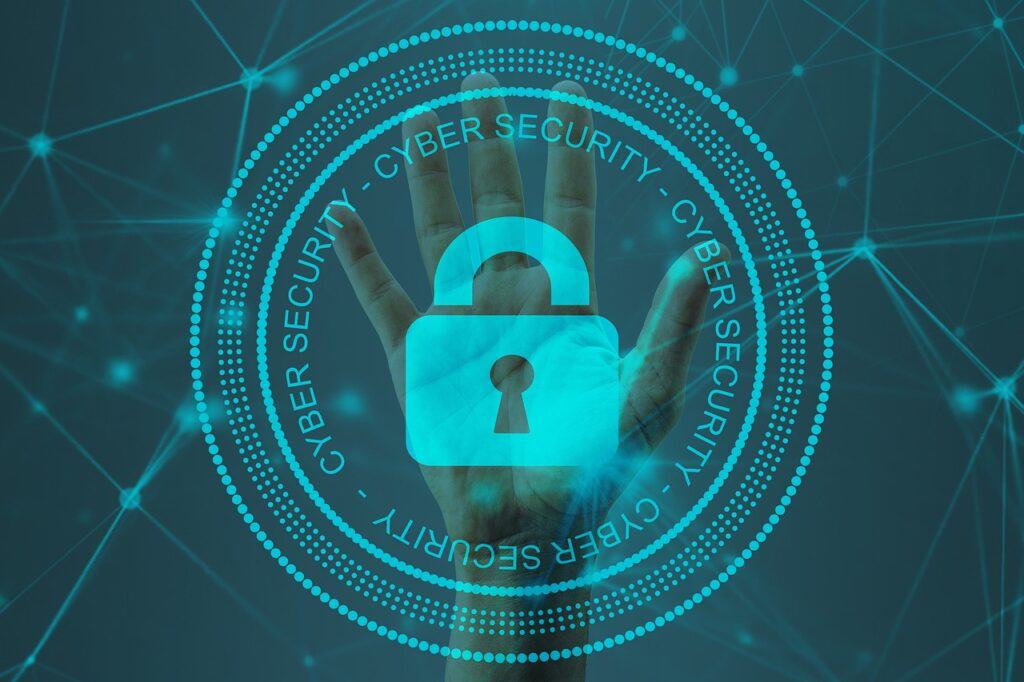Physical Address
304 North Cardinal St.
Dorchester Center, MA 02124

In the age of digital footprints, cybersecurity is no longer optional. In 2024, the stakes are higher than ever. This guide is your roadmap to understanding the Top 10 Cybersecurity Trends that will impact your personal and professional life. From AI-powered attacks to the evolving cloud landscape, we’ll equip you with actionable insights and practical tips to safeguard your data. Join us on this essential journey to secure your digital future.

Cybersecurity has come a long way since its early days. Initially focused on basic virus prevention, it has evolved into a complex field addressing a myriad of threats – from sophisticated phishing scams to state-sponsored cyberattacks. This section will trace this evolution and set the stage for understanding the trends of 2024.
Today, cybersecurity is more than just an IT concern; it’s a foundational aspect of all digital interactions. We’ll explore why robust cybersecurity strategies are essential not only for protecting personal information but also for safeguarding national security, healthcare systems, and the global economy.
Emerging technologies like AI, IoT, and blockchain are reshaping the landscape of cybersecurity. We’ll delve into how these technologies offer new opportunities and challenges in the fight against cyber threats, creating a dynamic and ever-evolving battlefield.
Artificial Intelligence (AI) and Machine Learning (ML) are at the forefront of a new era in cybersecurity. In 2024, these technologies are not just auxiliary tools but core components of cybersecurity strategies. AI’s ability to analyse vast datasets rapidly enables the identification of patterns and anomalies that could indicate a cyber threat. We’re seeing AI systems that can adapt and learn from new threats, effectively evolving in response to the changing tactics of cybercriminals. For instance, AI algorithms are being used to detect unusual network traffic, which could signify a breach, or to automatically respond to phishing emails. This trend represents a paradigm shift from reactive to proactive cybersecurity.
Quantum computing, with its immense processing power, is set to revolutionize various fields, including cybersecurity. Its ability to process complex calculations at unprecedented speeds poses a significant challenge to traditional encryption methods, potentially rendering them obsolete. On the flip side, quantum computing also offers new frontiers in cryptographic security. For example, quantum key distribution (QKD) promises a level of encryption that is virtually unbreakable, ensuring data security even against the most sophisticated attacks. This trend highlights the need for a quantum leap in cybersecurity measures to keep pace with advancing technology.
The Internet of Things (IoT) has seamlessly integrated technology into our daily lives, from smart home devices to connected industrial systems. However, this convenience comes with a price: increased vulnerability to cyber-attacks. Each connected device presents a potential entry point for hackers. In 2024, addressing the security of IoT devices is more crucial than ever. The trend is towards developing more robust security protocols and standards for IoT devices, along with advanced network security solutions to monitor and protect these interconnected ecosystems.
Blockchain technology, known for its application in cryptocurrencies, is emerging as a powerful tool in cybersecurity. Its decentralized nature and immutable ledger system make it ideal for securing data and transactions. Blockchain can be used to prevent fraud and unauthorized access, ensuring the integrity of data. In 2024, we’re seeing blockchain being employed in areas like secure messaging, identity verification, and safeguarding sensitive medical and financial records. This trend is a testament to the growing recognition of blockchain as a means to enhance cybersecurity.
As cyber threats evolve and expand, so does the demand for skilled cybersecurity professionals. The complexity and frequency of cyber attacks in 2024 necessitate a workforce that is not only technically proficient but also continuously updating its skills. There’s a growing emphasis on cybersecurity education and training, with more institutions offering specialized courses. The trend also underscores the importance of diversity in cybersecurity, bringing different perspectives and approaches to tackle the challenges in this field.
In 2024, governments worldwide are intensifying their focus on cybersecurity. This trend is marked by the enactment of stricter regulations and policies to protect critical infrastructure and personal data. These regulations compel organizations to adhere to specific standards and practices, thereby raising the overall level of cybersecurity. However, they also pose challenges in terms of compliance and adaptation. This trend reflects the increasing role of governmental oversight in the cybersecurity domain.
As businesses and individuals increasingly rely on cloud services, securing these platforms has become a paramount concern. In 2024, cloud security is not just about protecting data from unauthorized access; it’s also about ensuring the resilience of cloud services against disruptions and attacks. This trend is driving innovation in cloud security solutions, including more sophisticated encryption techniques, enhanced access controls, and advanced threat detection systems.
With the ubiquitous use of mobile devices, mobile security is a critical concern in 2024. Mobile devices are not just communication tools but also store a wealth of personal and professional data. This trend focuses on enhancing the security of mobile devices against malware, phishing attacks, and unauthorized data access. We’re seeing developments in mobile-specific security solutions, including biometric authentication and secure mobile applications.
Social engineering attacks, which exploit human psychology rather than technical vulnerabilities, continue to be a significant threat in 2024. These attacks, such as phishing and baiting, are becoming increasingly sophisticated. The trend emphasizes the need for comprehensive cybersecurity strategies that include employee training and awareness programs, as well as technical safeguards to identify and mitigate these attacks.
The “Zero Trust model“, based on the principle of ‘never trust, always verify,’ is increasingly being adopted by organizations. This approach assumes that threats can exist both outside and inside the network. Therefore, it requires strict identity verification for every person and device trying to access resources on a private network, regardless of whether they are within or outside of
In 2024, the tools and technologies at the forefront of cybersecurity are as diverse and sophisticated as the threats they aim to counter. This section offers a detailed look at the cutting-edge solutions shaping the future of digital defence.
With cyber threats becoming more complex, traditional encryption methods are no longer sufficient. In 2024, we’re seeing the emergence of advanced encryption techniques, including quantum-resistant algorithms, designed to withstand the power of quantum computing. These methods ensure the confidentiality and integrity of data, even in the face of evolving threats.
The market is witnessing the rise of comprehensive security platforms that offer a unified approach to threat detection, prevention, and response. These platforms integrate various security tools, including firewalls, intrusion detection systems, and antivirus software, providing a holistic view of an organization’s security posture.
Behavioural analytics tools are becoming increasingly important in identifying and mitigating insider threats and sophisticated attacks. By analyzing patterns of user behaviour, these tools can detect anomalies that may indicate a security breach, enabling a faster and more effective response.
Cloud security innovations are crucial in 2024, as more organizations move their operations to the cloud. These include enhanced cloud access security brokers (CASBs), cloud workload protection platforms, and secure access service edge (SASE) solutions. They provide improved visibility, control, and security for cloud environments.
With the prevalence of mobile devices in the workplace, Mobile Device Management (MDM) solutions are essential for securing these devices. MDM allows organizations to remotely manage and secure their mobile fleets, enforcing policies and ensuring that devices comply with security standards.
Cybersecurity trends in 2024 are not just technical challenges; they have significant global implications. This section explores the worldwide effects of these trends on privacy, international trade, and global security.
The growing sophistication of cyber threats poses serious risks to individual privacy. As personal data becomes more vulnerable, there’s a global push towards stronger data protection laws and privacy-preserving technologies.
Cybersecurity is increasingly becoming a key factor in international trade. Nations are implementing cybersecurity standards as prerequisites for trade agreements, impacting global market dynamics.
The role of cybersecurity in global security cannot be overstated. Cyber threats are now a central element in national security strategies, leading to the rise of cyber diplomacy as nations negotiate cyber norms and collaborate to combat cybercrime.
As we face an ever-evolving array of cyber threats, staying ahead requires vigilance and proactive measures. This section provides practical advice and best practices for both businesses and individuals.
The key to combating cyber threats lies in education and awareness. This section emphasizes the importance of continuous learning and staying informed about the latest cybersecurity trends and developments.
Cybersecurity Training Programs
The demand for cybersecurity training programs is on the rise, catering to professionals and the general public alike. These programs cover various aspects of cybersecurity, from basic digital hygiene to advanced threat analysis.
Online Resources and Communities
There’s a wealth of online resources available, including blogs, webinars, and forums, where individuals can learn about cybersecurity and stay updated on the latest trends. Engaging with these communities also provides valuable networking opportunities.
The Role of Governments and Institutions
Governments and educational institutions play a crucial role in promoting cybersecurity awareness. Initiatives like public awareness campaigns and the integration of cybersecurity education in school curricula are vital in building a security-conscious society.
We invite you to actively participate in the conversation about cybersecurity. Share your experiences, ask questions, and engage with others in the comments section below. Have you implemented any of these cybersecurity measures in your personal or professional life? What challenges have you faced, and how have you overcome them?
As we conclude our exploration of the “Top 10 Cybersecurity Trends for 2024,” it’s evident that the landscape of digital security is more complex and integral than ever before. Whether you’re deeply embedded in the tech world or just starting to navigate the digital sphere, understanding and adapting to these trends is crucial for ensuring your safety and security in the digital age. Stay informed, stay vigilant, and remember that cybersecurity is a shared responsibility in which each of us plays a crucial role.
The journey through the ever-evolving world of cybersecurity doesn’t end here. It’s an ongoing process of learning, adapting, and staying ahead of potential threats. As we look towards the future, it’s clear that the trends we’ve discussed will continue to shape the cybersecurity landscape for years to come.
Your Role in Shaping the Future of Cybersecurity
Your engagement and proactive approach to cybersecurity can make a significant difference. Whether you’re implementing robust security measures in your organization, educating yourself and others about potential cyber threats, or simply practising safe online habits, every action contributes to a more secure digital world.
The Importance of Community and Collaboration
Cybersecurity is not a solitary endeavour. It thrives on community and collaboration. Sharing knowledge, experiences, and best practices is vital for strengthening our collective defence against cyber threats. We encourage you to participate in online forums, attend cybersecurity conferences, and collaborate with peers to contribute to a safer digital environment.
Embracing Change and Innovation
The field of cybersecurity is characterized by rapid change and innovation. Embracing this dynamic nature is key to staying ahead. Keep an open mind to new technologies, methodologies, and strategies that emerge and consider how they can be applied to enhance your cybersecurity posture.
Final Thoughts and Call to Action
As we navigate through the complexities of the digital age, let us take these insights and apply them to build a safer, more secure cyber future. We urge you to remain vigilant, informed, and proactive in your cybersecurity efforts. Share this article with your network to spread awareness, and let’s work together to combat the cyber threats of tomorrow.
Thank you for joining us on this journey through the “Top 10 Cybersecurity Trends for 2024.” Your insights and experiences are invaluable in this ever-evolving field. Remember, cybersecurity is not just a technical issue; it’s a critical aspect of our modern lives, and we all have a part to play in it.
Stay safe, stay secure, and let’s shape a secure digital future together.